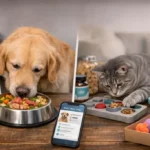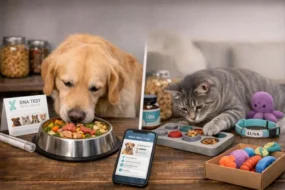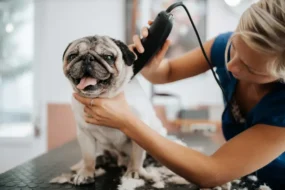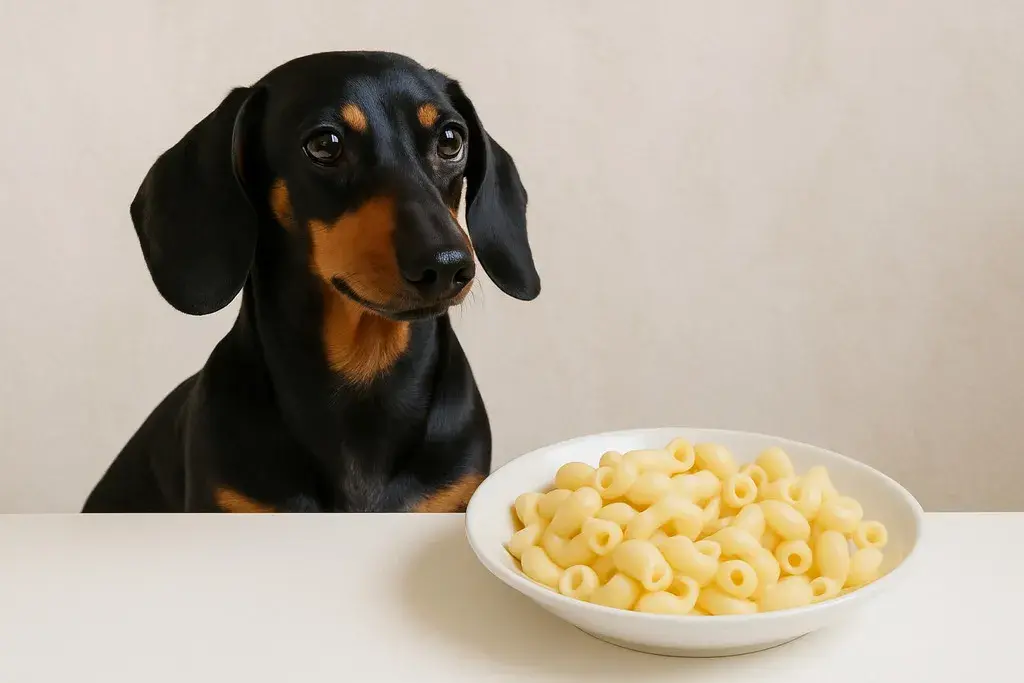
Pasta is a household favorite enjoyed the world over, from hearty spaghetti dinners to creamy fettuccine. If you’ve ever shared your meal with your dog or noticed them eagerly watching you eat, you may be wondering: Can dogs eat pasta? Is it safe? And if so, which types of pasta are okay? What about sauces or flavored varieties?
In this extensive guide, we answer these questions and more. We’ll explore the safety, nutritional impact, and practical advice for feeding pasta to your beloved pet, helping you make well-informed decisions about adding a little pasta to your dog’s diet.
Is Pasta Good for Dogs? A Nutritional Overview

From a nutritional perspective, pasta is not particularly good for dogs. While pasta can provide a quick source of carbohydrates, dogs primarily need protein and fats to maintain optimal health. Commercial dog foods are carefully formulated to balance a dog’s nutritional needs with vitamins, minerals, amino acids, and fats to keep them in good condition.
Pasta is mostly made of starch, an energy source that does not replace protein or fat requirements crucial to muscle maintenance, brain function, immune support, and skin health in dogs. Feeding your dog a diet high in carbohydrates, like pasta, consistently could contribute to unwanted weight gain and related health problems such as diabetes or joint strain.
However, as an occasional treat in small portions, pasta is unlikely to cause harm if your dog is healthy and you pay attention to portion control and do not add sauces or seasoning.
Can Dogs Eat Pasta?
The simple answer is yes, dogs can eat pasta, but with several important caveats. Plain, cooked pasta itself is not toxic to dogs. It can be given occasionally as a treat in very small amounts. However, pasta is not a nutritionally ideal food for dogs due to its high carbohydrate content and lack of essential nutrients like protein, vitamins, and minerals that their bodies need.
Dogs are primarily carnivores, and their digestive systems are adapted to metabolize animal proteins and fats more efficiently than carbohydrates. While carbs like pasta can provide energy, offering too much or feeding it regularly can lead to weight gain and potential health problems such as obesity and diabetes. Additionally, many dogs have sensitivities or allergies to ingredients commonly found in pasta, such as wheat or eggs, which can cause digestive upset or skin issues.
Therefore, while pasta itself is generally safe, it must be given cautiously, sparingly, and without any harmful additives.
Important Things to Know Before Feeding Pasta to Your Dog
The key when feeding pasta to your dog is moderation and preparation. Dogs can certainly eat pasta, but it should always be plain, cooked without salt, oils, butter, or seasoning, and never served with sauce or toppings. Uncooked pasta is a strict no; raw noodles are hard to digest and may cause intestinal blockages.
Feeding your dog even a small amount of flavored or sauced pasta is risky. Many common pasta sauces contain ingredients that are dangerous for dogs, including onion, garlic, salt, and spices. So the question “Can dogs eat pasta?” must always be answered with the caveat: Only plain, cooked pasta in tiny amounts and only as a very occasional treat.
If you do want to offer pasta to your dog, start with very small servings—just a spoonful or two—and observe how your dog reacts. Monitor for any signs of allergies such as itching, redness, or digestive issues like diarrhea or vomiting. If your dog shows any adverse effects, discontinue feeding pasta immediately and consult your veterinarian.
The Truth Behind Can Dogs Eat Plain Pasta
Plain pasta, meaning no sauce, salt, oils, or spices, is the safest way to share a bit of pasta with your dog. When prepared properly, plain cooked pasta is non-toxic and likely to be well-tolerated by most dogs. Many dog owners use plain pasta as a special treat to mix up their dog’s diet or to use as a filler when recommended by vets for certain health conditions requiring low-fat, low-protein diets.
How much plain pasta is appropriate depends on your dog’s size and overall health. Small breeds should only have a teaspoon or two occasionally, while medium and large breeds can typically handle up to a couple of tablespoons as an occasional snack. Puppies, whose digestive systems are still developing, are best kept away from pasta and should instead focus on balanced puppy food specially formulated for their growth.
It is crucial to remember that plain pasta provides empty calories without the important nutrients dogs require. Therefore, it should never replace their main meals or a daily balanced diet. If used sparingly, plain pasta can be a safe way to provide some extra carbohydrates or simply to treat your dog with a tiny piece of what you’re eating.
Can Dogs Eat Pasta Noodles?
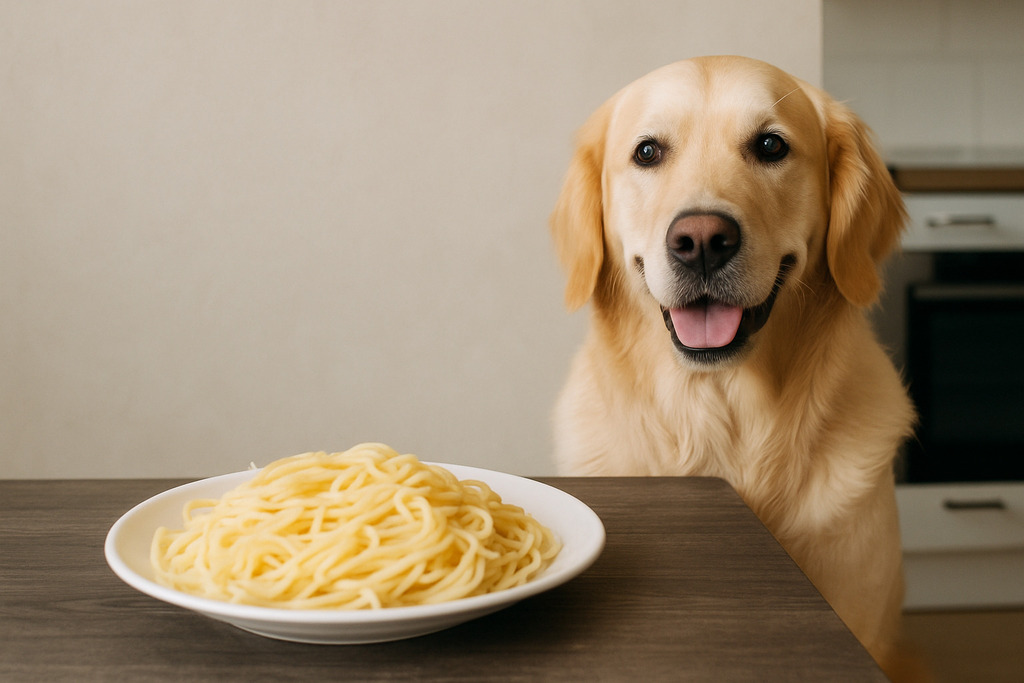
When asking if dogs can eat pasta noodles, the answer aligns with the above points but expands into the specific types and forms of pasta. Dogs can safely eat cooked pasta noodles such as spaghetti, penne, or fusilli, as long as the noodles are plain and cooked thoroughly. Long strands like spaghetti may be cut into smaller pieces to reduce the risk of choking, particularly for smaller dogs or puppies.
It is critical to never feed your dog raw pasta noodles. Raw pasta is much harder for dogs to digest and could potentially cause blockages or severe digestive upset. Cooking pasta softens it and makes it easier for dogs to chew and digest.
Offering pasta noodles to your dog can be a novel experience, but it should be limited to small quantities and without any seasoning or sauce. Some pet owners find that dogs enjoy the texture and mild flavor of cooked noodles as a treat, but this should always be done cautiously and never replace the balanced nutrition of dog food.
Can Dogs Eat Pasta Sauce?
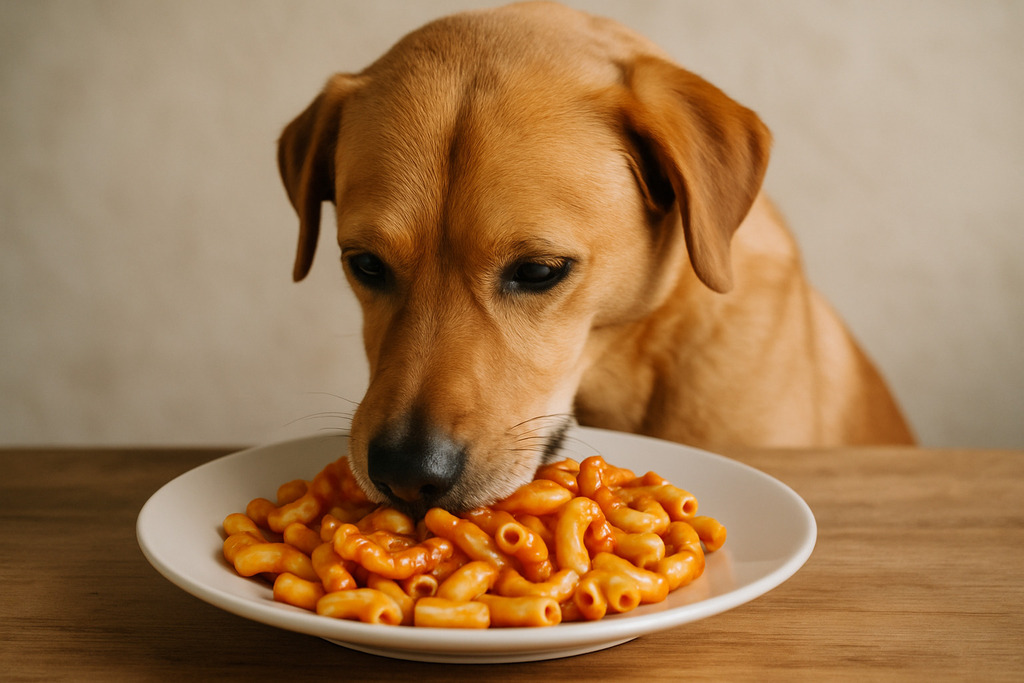
Most pasta sauces are unsafe for dogs. Pasta sauce often contains ingredients that are highly toxic or harmful to canine health. Garlic and onions, staples in many sauces and Italian recipes, can cause serious damage to a dog’s red blood cells and lead to anemia, which is potentially life-threatening even in small amounts.
In addition to garlic and onions, many sauces contain high levels of salt, sugar, and spices, all of which can be harmful to dogs. Dairy-based sauces like Alfredo add rich fats and lactose, which many dogs cannot digest properly, causing diarrhea or stomach upset.
Cheese in sauces, while sometimes tolerated by a few dogs, generally should be avoided unless you know your dog is not lactose intolerant. Any accidental ingestion of sauce should be treated seriously; if your dog consumes pasta sauce, monitor them closely and contact your veterinarian immediately if you notice any signs of illness such as vomiting, diarrhea, weakness, or difficulty breathing.
In short, never feed your dog pasta sauce. Always serve pasta plain and unseasoned.
What Kind of Pasta is Okay for Dogs?
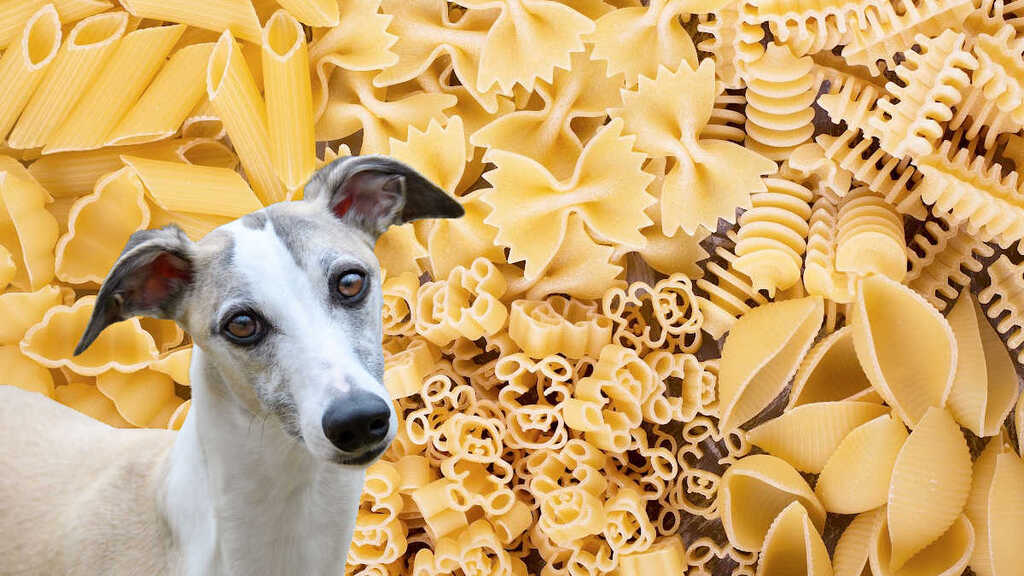
Here’s a simple table to help you know what’s safe and what to avoid:
| Pasta Type | Safe for Dogs? | Notes |
| Plain wheat pasta | Yes, in moderation | Watch for allergies, serve cooked |
| Whole wheat pasta | Yes, in moderation | More fiber—introduce gradually |
| Gluten-free pasta | Often safe | Check for hidden seasonings or additives |
| Egg noodles | Yes, if no allergies | Some dogs are allergic to eggs |
| Rice or corn pasta | Yes | Typically easy on digestion |
| Raw pasta | No | Choking/blockage risk |
| Flavored/star pasta | No | Herbs/spices may be toxic |
| Stuffed pasta | No | Fillings often contain cheese, garlic, onions or harmful fats |
| Pasta with sauce | No | Most sauces are toxic or fatty |
Always read ingredient labels carefully! When in doubt, stick with a small portion of plain, cooked pasta.
How to Safely Feed Pasta to Dogs: Tips for Pet Parents
Feeding pasta to dogs safely requires cautious preparation and portion control. First and foremost, always cook the pasta fully in plain water without adding any salt, oils, or seasoning. Avoid throwing your dog scraps straight from your plate if it’s covered in sauce or butter.
After cooking, allow the pasta to cool completely before serving to prevent burns and help avoid digestive upset. Start with very small amounts to test your dog’s tolerance, especially if this is their first time eating pasta. Watch for allergic reactions like itching or digestive issues like diarrhea and vomiting.
Treat pasta strictly as an occasional novelty treat rather than a regular part of the diet. It should never comprise more than 5-10% of your dog’s daily caloric intake to avoid risks related to weight gain and nutrient imbalance.
Dogs with existing health problems such as diabetes, pancreatitis, obesity, or food allergies should avoid pasta entirely. When in doubt, a quick call to your veterinarian can provide peace of mind before introducing new human foods to your pet.
Frequently Asked Questions
Pasta should only be an occasional treat because it lacks essential nutrients and contains excess carbohydrates.
Puppies’ digestive systems are delicate and require specific nutrition. It’s best to avoid pasta until they are grown and have no dietary restrictions.
Immediately contact your veterinarian if your dog consumes sauce, especially if it contains garlic or onions, as these are toxic to dogs.
Gluten-free pasta is usually safe, but always confirm that it is plain and free from added salt or seasoning.
Yes. Cooked lean meats, vegetables like carrots and green beans, and small pieces of fruit like apples (without seeds) are excellent low-calorie, nutritious treats
Conclusion:
In summary, dogs can eat pasta but only plain, cooked, and in very small, infrequent amounts. Pasta itself carries low nutritional value and can pose health risks if served with sauces, seasonings, or in large portions. Treat it as a rare indulgence rather than a regular dietary component.
Always prioritize your dog’s specific health needs and seek veterinary advice when considering new foods. With attentive care, you can keep your dog’s diet safe, healthy, and tasty—sometimes even with a little pasta on the side.
For more guidance on safe human foods for dogs and expert nutritional tips, feel free to consult your veterinarian or subscribe to trusted pet wellness resources.
In Case You Missed It!



